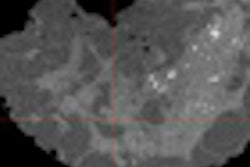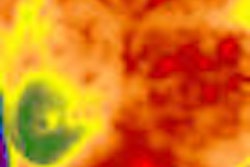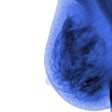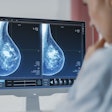Nine years ago, researchers from the Nordic Cochrane Centre in Copenhagen, Denmark, roiled the women's imaging community with a study challenging the usefulness of mammography screening. Their new study, which indicates that screening mammography programs contribute to overtreatment of cancers that are actually harmless, is likely to have the same effect.
In a study published online in BMJ last week, Karsten Jørgensen and Peter Gøtzsche examined trends in the incidence of breast cancer seven years before and after government-sponsored programs for screening were established in Australia, Britain, Canada, Norway, and Sweden (BMJ, July 9, 2009).
Jørgensen and Gøtzsche suggested that harmless invasive cancer is common, and when it is detected in screening programs, it is unnecessarily treated.
"Autopsy studies have found inconsequential breast lesions," they wrote. "Thirty-seven percent of women aged 40 to 54 who died from causes other than breast cancer had lesions of invasive or noninvasive cancer at autopsy, and half were visible on radiography."
The researchers conducted a PubMed search in 2006 and reviewed literature in any language with data on breast cancer incidence for both screened and older, nonscreened age groups. Five articles were included in the study; from these, Jørgensen and Gøtzsche extracted data on population size, screening uptake, length of time before and after the implementation of screening, and incidence of breast cancer for screened and nonscreened age groups.
They found that in populations where organized screening for breast cancer is offered, one-third of the women were overdiagnosed -- that is, cancers that don't cause death or symptoms were detected and treated. A country's spike in breast cancer incidence was related to the introduction of a screening program, and little of this increase was counterbalanced by a drop in breast cancer incidence in previously screened women.
The hypothesis that mammography screening programs lead to overdiagnosis and overtreatment isn't new for Nordic Cochrane researchers. In 2000, Gøtzsche published a study in Lancet that evaluated eight mammography screening trials for bias, including the Canadian National Breast Screening Study and the University of Edinburgh randomized trial of breast cancer screening.
In half of the trials, Gøtzsche and colleague Dr. Ole Olsen determined that the randomization was inconsistent. Although the remaining trials were acceptably randomized, mammography screening had no effect on breast cancer mortality (relative risk = 1.04) or total mortality (relative risk = 0.99). In the six trials where a bias had been identified, the relative risk was 0.75.
But some questioned the emphasis Gøtzsche and Olsen put on randomization, pointing out that the methodology of the majority of the studies was sound.
Their latest findings have already come under fire as well: The study's methodology is flawed, according to Dr. Daniel Kopans, professor of radiology at Harvard Medical School and senior radiologist in the Breast Imaging Division at Massachusetts General Hospital, both in Boston.
"The methodology compares totally different populations at different periods in time with differing prior probability of disease," Kopans told AuntMinnie.com via e-mail. "The study overlooks the fact that screening dips into future incidence and when women first begin screening, the prevalence screen finds cancers that have been building up prior to diagnosis."
Mammography screening programs have been shown to save lives, Kopans said.
"Not only have randomized, controlled trials shown conclusively that mammography
screening decreases breast cancer deaths, but the decrease in breast cancer deaths seen in countries where screening is widespread is almost entirely due to mammography screening," he said. "In the U.S., the death rate from breast cancer has decreased by almost 30% since 1990 due, predominantly, to screening mammography. And studies in Sweden and the Netherlands show that the decrease in breast cancer deaths in these countries is directly attributable to mammography screening."
By Kate Madden Yee
AuntMinnie.com staff writer
July 13, 2009
Related Reading
Canadian cancer screening rates rise, July 2, 2009
Declines in U.S. breast cancer rates not uniform, June 29, 2009
Falling breast cancer rates seen only in whites, April 17, 2008
Scandinavian studies take mammography to task once again, March 3, 2006
American Cancer Society blasts Danish mammography study, January 10, 2000
Copyright © 2009 AuntMinnie.com




















